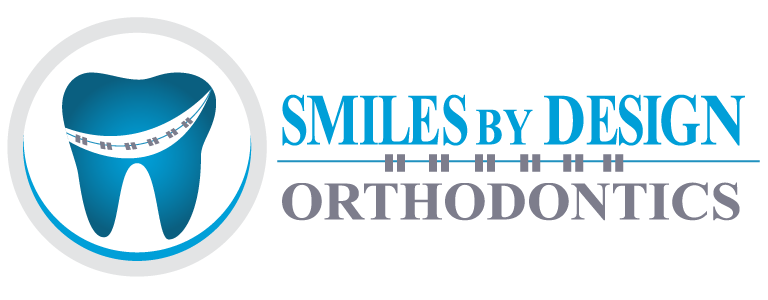FREQUENTLY ASKED QUESTIONS
1. WHAT IS AN ORTHODONTIST?
An orthodontist is a dental specialist who has completed a university postgraduate program in orthodontics. Similar to a doctor deciding to specialize in heart surgery or vision problems, orthodontists are dedicated to a specific aspect of dental health, specifically to prevent and correct misaligned teeth and jaws. These problems are called malocclusions or faulty occlusions. People may choose to use the services of an orthodontist for health and cosmetic reasons. Orthodontists are also specialized in treating TMD and sleep apnea.
2. WHY WOULD ONE REQUIRE ORTHODONTIC TREATMENT?
In children, the growth and development of the jaw and face helps develop proper nasal/nose breathing and the correct growth pattern. It doesn’t hurt that an attractive smile positively contributes to confidence and self-image.
3. WHAT AGE SHOULD A CHILD SEE AN ORTHODONTIST?
We advise for initial checkups to start as early as seven years of age. However, should you notice that your child is unable to rest well due to mouth breathing, thumb sucking or poor tongue posturing between the teeth, please bring the child in to be checked. You do not need a referral – simply e-mail us or give us a call.
Other reasons to bring a child in to see an orthodontist would be crowding of primary teeth, cross bite, under bite, tooth decay or premature loss of primary teeth. Any issues interfering with the proper growth and development of the jaw should be addressed early and doing so may prevent the need for more complex treatment later.
4. WHAT IS THE BENEFIT OF TREATING MY CHILD AT AN EARLY AGE?
A child may benefit from treatment at an early age because it may assist in the development of the upper and lower jaw and making space for permanent teeth. It can help with straightening teeth. Additionally, it may help assist with the repair of incorrect oral positioning which may include breathing from the mouth and thumb sucking.
We don’t recommend that you wait till the permanent teeth are in, because a child’s growth potential can be missed by delaying treatment. Not all children are treated at an early age, this is only done if required, to avoid future issues.
5. IF MY CHILD REQUIRES ORTHODONTIC TREATMENT AT AGE 4 TO 10, THEN HOW LONG WILL MY CHILD BE IN TREATMENT FOR?
Phase 1
Treatment would occur when the child still has some baby teeth. It normally lasts 4-12 months. After phase one, and the treatment of the growth anomaly or blocked-out teeth, the child would wear a retainer at night. We would monitor the growth and development of their teeth until all permanent dentition have erupted into the mouth.
Phase 2
This appointment is arranged when the permanent teeth have erupted into the mouth. We evaluate the bite and position of the jaws.
6. WHAT DO BRACES DO?
Braces apply gentle pressure to your teeth, moving them into the correct position.
7. WHY SHOULD AN INDIVIDUAL GET BRACES?
Improve appearance and boost self esteem
Easier to brush and floss
Improve oral hygiene
Better digestion and chewing
Better bite
8. WHAT ARE THE DIFFERENT TYPES OF BRACES?
A few types of braces are as follows:
A. Metal are the most common type of braces. They are now more comfortable and attractive. Individuals can personalize the braces and choose among various colours of elastic that wrap around these braces.
B. Ceramic Braces have become increasingly popular with adults as they are made of clear medical grade material. Hence, these braces have more esthetic appeal.
C. Invisible clear braces are virtually invisible. Invisalign provides an individual with a transparent set of plastic aligners that may be replaced regularly to slowly move your teeth into the proper position.
D. Lingual braces permit an individual to wear their braces behind his/her teeth. Hence, the braces cannot be easily seen.
9. HOW LONG DOES AN INDIVIDUAL HAVE TO WEAR BRACES?
Treatment can range and is cumstomized per patient and their bite. However, most individuals wear braces for under two years. The duration depends on the severity of the problem and the technique being used.
10. DO BRACES HURT?
No, they do not hurt. You do not feel them when they are put on. Afterwards, your teeth can be a little sore, as they are being moved into the proper position by the braces. This usually occurs for the first few days. Tylenol or Advil may be used to ease this discomfort.
11. HOW DO YOU CARE FOR YOUR BRACES?
It is essential for an individual with braces to avoid biting anything hard. For instance, one should not chew raw vegetables, hard candy, or ice. These foods may loosen and distort/break the wires or brackets, even break them. Please refer to the ALL ABOUT BRACES page for more information.
Regular dental care should continue with braces. Flossing should be done at least once a day, with brushing taking place three or four times per day. Parents should supervise their children to ensure that they do a good job brushing.
12. WILL I STILL BE ABLE TO PLAY SPORTS?
We recommend a mouthguard when playing any sport. One would be provided to you once your orthodontic treatment begins.
13. IS IT TOO LATE TO HAVE BRACES IF I AM AN ADULT?
It is never too late to improve your health, appearance, and level of confidence.
